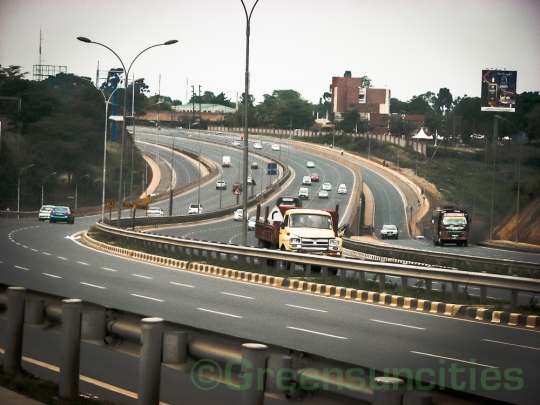Karen – From Grace to Grass
Written by Sande Dengal,
Edited by Gloria Auma N.
Karen is one of the much sought after leafy suburbs of Nairobi, being rivaled only by areas like Muthaiga and Runda. The Nairobi residents of this upmarket area have enjoyed its quiet and serene environment for quite a long time.

Taxis lined up waiting for customers at the Karen Shopping Center outside a makeshift extension to a building.
The Karen suburb is located within the Northern Nairobi area and got its name from renown Baroness – Karen Christenze von Blixen –Finecke, a Danish author (17.04.1885 –07.09.1962) who lived in the area from 1914 to 1931. She is best known for her book ‘Out of Africa’, which is an account of her life while in Kenya. The book was adopted into an Academy Award winning film. She also established the Karen Coffee Company.
Karen is a low-density, single-dimensional development area, characterised by large residential subdivisions, very good amenities and lower crime rates. Over the years it has been home to both wealthy and prominent people in Kenyan society.
In the recent past, however, it has attracted many a good number of people seeking to settle within its bounds. This has led to a high demand for, and establishment of shopping malls around the area. This pits the benefits to individuals against broader social and environmental concerns.
Karen Shopping Center is located at a-round-about serving both Ngong Road and d and Langata Road. In many situations, strip or ribbon development takes place when extensive commercial development occurs in a linear pattern along both sides of major arterial roadways. Like other aspects of urban sprawl, it is viewed as ugly and as a cause of traffic congestion caused by old matatus parked on both sides of the road, mushrooming roadside kiosks, people trading second hand cloths, stagnant water in non functional drainage systems as well as a constant barrage of disorderly foot traffic from shoppers and workers entering and exiting the street.
“This aspect of urban sprawl has led to the insecurity of the area.” Said Ronald Musengi, a Commissioner at the National Police Service Commission and a long time resident of Karen.
The 2014 Revision of World Urbanization Prospects UN report says rapid urbanisation brings opportunities for governments to improve access to important services. “Providing public transportation, as well as housing, electricity, water and sanitation for a densely settled population is typically cheaper and less environmentally damaging than providing a similar level of services to a predominantly rural household,” it says.

Mushrooming commercial establishments have increased the foot traffic along the Karen roads.
The residents of Karen acknowledge that growth is inevitable but are asking the Nairobi City County government to intervene. The residents would like the government to address the situation by expansion of available facilities to cater to the new populations and have Karen reclaim its former glory. Would Nairobi City County take up the request and embrace this evident opportunity to improve access to the important services – public transportation, water and sanitation for the shopping center?








